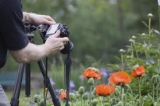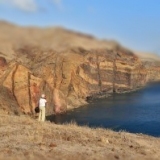- Forum
- General Discussion | Introductions | Off Topic Forum
- Photography General Discussion
- Have you heard of using paint chip cards for white balance cards?
Have you heard of using paint chip cards for white balance cards?
-
 Topic Author
Topic Author
- Patty Ganahl
- Snapobsessed
-
- Nikon D850, Nikon D7500 and Sony A7R II
- Followers: 74
- Posts: 267
-
Points:
957
Post #411180
-

- ThatNikonGuy
- Master of the Lens
-
- Nikon D810 & D300
- Followers: 299
- Posts: 1888
-
Points:
16120
Post #411192
-

- garyrhook
- Oh Wise One
-
- Nikon D850, Nikon D750, Panasonic G7K
- Followers: 912
- Posts: 11103
-
Points:
67681
Post #411289
Patty Ganahl wrote: I read some time ago that you can use the paint chip cards from Home Depot as a white balance card. I was just in Home Depot last night and there were so many. Anyone know specifically which one works the best?
I'll go with, "I think you were misinformed." That really makes no sense whatsoever.
Gray cards are not expensive. Buy a WhiBal card for $20 and know what you've got.
-

- Ryan Obryan
- Snapobsessed
-
- Canon 7D
- Followers: 99
- Posts: 266
-
Points:
2284
Post #411340
-

- Ben Vanderbilt
- Photography Hooked
-
- Nikon D4s and Z7
- Followers: 189
- Posts: 651
-
Points:
9690
Post #411426
-

- Shadowfixer1
- Photo Elder
-
- Olympus OMD E-M1 MKII
- Followers: 1350
- Posts: 5559
-
Points:
73735
Post #411429
-

- garyrhook
- Oh Wise One
-
- Nikon D850, Nikon D750, Panasonic G7K
- Followers: 912
- Posts: 11103
-
Points:
67681
-

- Richard K Photography
- Photography Hooked
-
- Nikon D700
- Followers: 155
- Posts: 587
-
Points:
5042
Post #411509
Shadowfixer1 wrote: You weren't misinformed. Back in the early days of digital people would use paint chip cards to fool white balance but not for setting the correct white balance although some did with gray chips. Here is how they were generally used. You carried two colors. A light blue and a light orange. Set the white balance on the blue chip and you got a nice warm toned image because you fooled the white balance. Set it on the orange chip and you got a nice cool toned image. This is the way we tricked the camera back when there weren't as many adjustments. That is most likely the scenario the person was talking about. I haven't needed that trick in years and it would still work but shooting raw and all the presets available now eliminates the need for this.
+1 on the interesting fun fact. Thanks for sharing this.
-

- Robert Chen
- Photography Hooked
-
- Nikon D300
- Followers: 194
- Posts: 794
-
Points:
5860
Post #411613
Nikon D300 24-70mm f2.8
70-200mm f2.8
50mm f1.4 & 50mm f1.8
105mm f2.8
2 SB800
Post #411884
Shadowfixer1 wrote: You weren't misinformed. Back in the early days of digital people would use paint chip cards to fool white balance but not for setting the correct white balance although some did with gray chips. Here is how they were generally used. You carried two colors. A light blue and a light orange. Set the white balance on the blue chip and you got a nice warm toned image because you fooled the white balance. Set it on the orange chip and you got a nice cool toned image. This is the way we tricked the camera back when there weren't as many adjustments. That is most likely the scenario the person was talking about. I haven't needed that trick in years and it would still work but shooting raw and all the presets available now eliminates the need for this.
Post #412048
Overread wrote:
Shadowfixer1 wrote: You weren't misinformed. Back in the early days of digital people would use paint chip cards to fool white balance but not for setting the correct white balance although some did with gray chips. Here is how they were generally used. You carried two colors. A light blue and a light orange. Set the white balance on the blue chip and you got a nice warm toned image because you fooled the white balance. Set it on the orange chip and you got a nice cool toned image. This is the way we tricked the camera back when there weren't as many adjustments. That is most likely the scenario the person was talking about. I haven't needed that trick in years and it would still work but shooting raw and all the presets available now eliminates the need for this.
Your post brought back memories of forum posts when people would talk about doing that. I was still shooting film then, and thought it seemed like a lot of bother.
Well another way to set WB without using a formal gray card, exposure tool, is the top from a Pringles can, or a cutout piece from the clear/opaque milk cartons. Those do work surprisingly well. I mean if you are going to go ghetto then those are the ghettoest.
- Forum
- General Discussion | Introductions | Off Topic Forum
- Photography General Discussion
- Have you heard of using paint chip cards for white balance cards?
Latest Reviews
The Olympus Pen E-P7 is an affordable micro four thirds mirrorless camera with 4K video capabilities, a 20.3MP sensor, and 121 focus points, making it a solid entry-level camera for beginners.
The Panasonic G9 II is a 25.2-megapixel micro four thirds camera with numerous features that make it punch out of its weight class, like 779 AF points, 5.8K video, and weather sealing.
The Fujifilm XT5 is a 40MP mirrorless camera capable of 6.2K video at 30p. With those specs, it’s an ideal choice for photographers needing a camera to pull double duty for imaging and video.
The Canon EOS R100 is an entry-level mirrorless camera introduced in 2023. But just because it’s an entry-level camera doesn’t mean it’s a bare-bones camera. Find out why in this review!
Forum Top Posters
-
1Scotty 7 posts
-
2TCav 6 posts
-
3Ruby Grace 4 posts
-
4Street Shark 4 posts
-
5CharleyL 3 posts
-
6Roger Lang 3 posts
-
7Nefarious 3 posts
-
8Sassy Girl 2 posts
-
9Carter Gledhill 2 posts
-
10Garbo 2 posts
Latest Articles
The Olympus Pen E-P7 is an affordable micro four thirds mirrorless camera with 4K video capabilities, a 20.3MP sensor, and 121 focus points, making it a solid entry-level camera for beginners.
Starting a photography business is one thing; sustaining your business over a long period of time is another. Use the tips in this professional photography guide to build something with longevity!
The Panasonic G9 II is a 25.2-megapixel micro four thirds camera with numerous features that make it punch out of its weight class, like 779 AF points, 5.8K video, and weather sealing.
Cinematic photography is an interesting genre that combines photographic and videographic skills along with effective storytelling techniques. The result? Highly impactful images!
Newborn photography requires skill, the right gear, and a lot of patience. This beginner’s guide discusses critical topics that will help you be more prepared for before, during, and after the shoot.
To fill the frame means to expand the footprint of the subject in your shot. Get in close, zoom in, crop the image, or use other techniques to bring the subject to the forefront.
With these simple yet effective beginner photography tips, you can avoid some of the common mistakes beginners make and get improved results with your images.
Urban photography is a genre showcasing features in urban settings. You can photograph people, architecture, mass transit, and many other subjects. Learn how to do so in this guide!















